Blog of Jack and Jude
explorers, photographers, authors
February 2014 January 2014 >>
Our website has undergone a major facelift
Since created a few years ago, our website has been fixed at 940 pixels width. Now it’s responsive, meaning it should re-size according to screen width – So it should fit handheld devices and all other screens displaying up to its max width of 1280 pixels. A major revamped was required to achieve this, including theme change, new plugins and images.
Short Timers
Jack has been working for more than a week to achieve the website upgrade and he’s pretty full up on web work. Especially as the far horizon keeps beckoning him to set sail, and that just what the Tujays, Jack and Jude, will be doing very shorty. We fly back across the country in a week’s time. Only seven big sleeps till we’re back on board Banyandah. While Jack’s been locked to his computer, Jude has been manning Jerome’s computer shop because he went off racing in the Hobie 16 Worlds held in Jervis Bay. Jerome did fantastically well to make it through the 10 qualifying races and into the finals. The competition was intense. Unfortunately His crew Deb tore off a toe nail on the first day of the finals and had to be carried off the beach. Jerome grabbed a 15 year old kid off the beach and continued racing. Together they finished mid fleet overall, but scored an amazing 11th in the second last race. They all came home battered and bruised holding a trophy.
First chore once back on board will be repainting our decks. The anti-skid paint we applied a few years ago in Port Lincoln didn’t stick so well. It seems we should have used a primer – even though the paint maker said none was needed. Don’t believe everything you read. A lesson relearned after many hours of scraping and jet blasting off the flaky acrylic paint.
After that we’re heading east, first to Esperance then the Recherche Archipelago and onwards, investigating all the little out of the way spots to South Australia. Watch this space
Film Making on the Gordon River
(click on any image to enlarge)
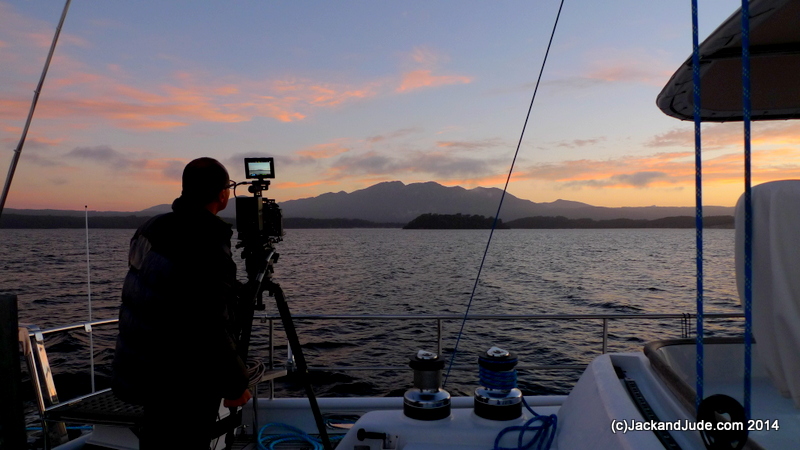 Sometimes an adventure can become a disaster when bad weather, people friction, or bad decisions prevail. Other times, an adventure can flow from one high to an even greater one when the team merges to successfully overcome every adversity, especially when the adventure is blessed with perfect conditions. Happily this is about one of those events.
Sometimes an adventure can become a disaster when bad weather, people friction, or bad decisions prevail. Other times, an adventure can flow from one high to an even greater one when the team merges to successfully overcome every adversity, especially when the adventure is blessed with perfect conditions. Happily this is about one of those events.
From the early 1900s, the Morrison family of Strahan were actively involved in harvesting the unique timbers found around Macquarie Harbour located on the west coast of Tasmania. Today there are but a few in this family working in an industry that has been greatly altered by the passage of time. What was once harvested and then used extensively in shipbuilding and furniture making is now protected. On the shores of downtown Strahan, Grant Morrison, known locally as Snowy, runs the family sawmill producing Huon, Celery Top, and King Billy Pine products for the craft and tourist industries. Snowy’s cousin, Ronnie Morrison, a local identity known best for his development of the local salmon fish farm industry, worked as a young man alongside his father Keith and uncle Reg, deep in what is today the world heritage forests surrounding Macquarie Harbour. Many years might have passed, but Ronnie Morrison retains crisp memories of his time swinging an axe and cranking a Wallaby jack, and it was with Ronnie as team leader that we ventured into wild country seen by few in the modern era.
The purpose of this venture – to document the history of an era fast slipping away and becoming a dim memory. The storyline – an experienced bushman shows a newcomer the old ways of harvesting the ancient Pines found in Tasmania’s southwest. Our team consisted of the award winning cinematographer Joe Shemesh and his sound technician Sarah; the principal actors, Ronnie Morrison and Franz Docherty; the producer/director Garry Kerr; with Ronnie Morrison’s son Deek and Jude and Jack as support crew.
Jack and Jude were fortunate to have become involved in this magical adventure because not only did we know most of the participants, our boating skills proved valuable in managing the two large support vessels, two 60hp tinnies and a wooden Piners punt. In addition, two years earlier we had explored the Gordon and Sprent Rivers by kayak and on foot, looking for Piners’ remnants. We have a keen interest in the history of the Huon Piners.

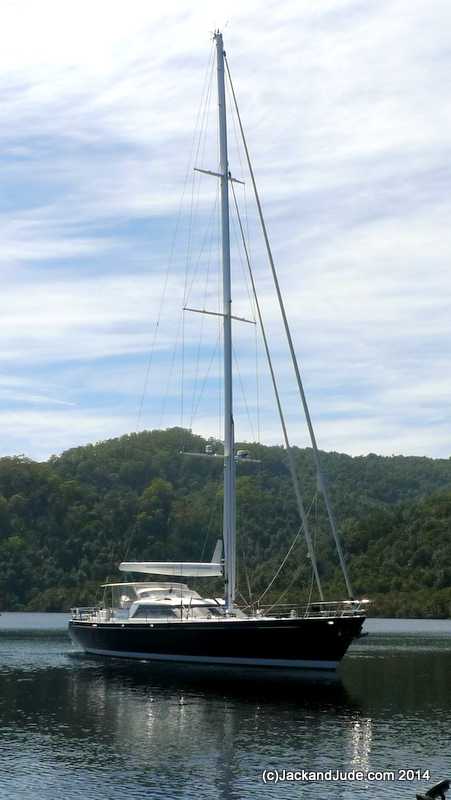
Maatsuyker – a Fitzroy 80
 Last century, there were many families involved in harvesting these unique slow growing trees that live many hundreds, maybe even thousands of years. With wood light cream to yellow in colour, soft, straight grained, light in weight, it is durable and easily worked. The sapwood is pale, very narrow and is not easily distinguishable. The durability of the timber is due to the presence of aromatic oils that makes it highly resistant to fungal and insect attack. Fallen logs can lay on the forest floor for many decades and yet its timber remains as good as when it was felled. In fact, logs recently dug from the bottom of the lakes formed when the first Gordon River Dam was created produced perfect timber. Today, Forestry Tasmania still salvage logs washed out the rivers and those found in old log dumps atop the Teepookana Plateau where the very best Huon grow. These logs are sold to saw millers who cut them into timbers used in the boat and craft industry.
Last century, there were many families involved in harvesting these unique slow growing trees that live many hundreds, maybe even thousands of years. With wood light cream to yellow in colour, soft, straight grained, light in weight, it is durable and easily worked. The sapwood is pale, very narrow and is not easily distinguishable. The durability of the timber is due to the presence of aromatic oils that makes it highly resistant to fungal and insect attack. Fallen logs can lay on the forest floor for many decades and yet its timber remains as good as when it was felled. In fact, logs recently dug from the bottom of the lakes formed when the first Gordon River Dam was created produced perfect timber. Today, Forestry Tasmania still salvage logs washed out the rivers and those found in old log dumps atop the Teepookana Plateau where the very best Huon grow. These logs are sold to saw millers who cut them into timbers used in the boat and craft industry.
 “The Huon Pine Story” by Garry Kerr and Harry McDermott is a wonderful reference book that is also endowed with many beautiful photographs. Here is their description of the piners:
“The Huon Pine Story” by Garry Kerr and Harry McDermott is a wonderful reference book that is also endowed with many beautiful photographs. Here is their description of the piners:
The piners life differed totally to that of any other logger of his time. His was an amphibious operation using the rivers and creeks as his highways and service roads to give him access to the pine beds and to float out the logs.
He was the only bushman in Australia who had a rowing punt as a major part of his equipment. In many cases it was his only means of transport in and out the forests. It was his lifeline. There were places where to lose a punt meant death by starvation, so wild and remote was their area of work.
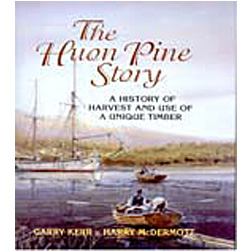 Piners typically spent months at a time upriver, living in crude huts or tents, and falling trees in the dank wet wilderness. Some only came out to civilisation for a week twice a year. It was a life hard on men, woman, and marriages. This all took place in country of unparalleled natural beauty. Some piners loved the rivers and the scenery, while others despised it as a leech-ridden work camp, remote from the comforts of civilization.
Piners typically spent months at a time upriver, living in crude huts or tents, and falling trees in the dank wet wilderness. Some only came out to civilisation for a week twice a year. It was a life hard on men, woman, and marriages. This all took place in country of unparalleled natural beauty. Some piners loved the rivers and the scenery, while others despised it as a leech-ridden work camp, remote from the comforts of civilization.
In making this documentary several points needed to be made clear. Ronnie and the crew were determined to correct the myth that these trees were eliminated by the piners of the past. Everywhere we ventured inside the World Heritage Parklands, along the rivers and in the forests, we witnessed with our own eyes that these trees are abundant with many mature trees surrounded by saplings and young trees.  Huon pines are distinctive trees, easily spotted by their drooping deep green branchlets, akin to needles, and quite different from the other species. Myrtles, also found extensively, have a small dot shaped leaf and Blackwood, also plentiful, have large leaves and gnarly bark. But there is a species of trees that has greatly increased in numbers – Eucalyptus. These are now seen standing in great numbers well clear of the forest canopy sweeping up the hillsides and along river edges. This may be because of our changing climate, aided by the few quite large forest fires that have occurred naturally in the recent past. Whatever created the conditions for these trees to flourish has brought an ill wind to these ancient forests because Eucalypts shed branches and drop copious amounts of leaf, adding greatly to the fuel on the forest floor. If hot, dry conditions persist, the chance of intense fires grows alarmingly, and we may in fact see the demise of the ancient Huons, Celery Tops, and King Billy Pines.
Huon pines are distinctive trees, easily spotted by their drooping deep green branchlets, akin to needles, and quite different from the other species. Myrtles, also found extensively, have a small dot shaped leaf and Blackwood, also plentiful, have large leaves and gnarly bark. But there is a species of trees that has greatly increased in numbers – Eucalyptus. These are now seen standing in great numbers well clear of the forest canopy sweeping up the hillsides and along river edges. This may be because of our changing climate, aided by the few quite large forest fires that have occurred naturally in the recent past. Whatever created the conditions for these trees to flourish has brought an ill wind to these ancient forests because Eucalypts shed branches and drop copious amounts of leaf, adding greatly to the fuel on the forest floor. If hot, dry conditions persist, the chance of intense fires grows alarmingly, and we may in fact see the demise of the ancient Huons, Celery Tops, and King Billy Pines.
There are another 100 photos online showing more of the beauty, adventure and history of the Piners that worked the Gordon River.
A similar adventure can be enjoyed by all who are fit and have some bush skills by trekking the historical Eagle Creek Track that connects the Gordon with the Franklin River. See our notes on the track that was recently cleared and re-opened.
Post Script – 5 Feb:
We are home and surrounded by a swarm of grandchildren and loving it. Ballina is green, wet, and everything seems to be in order here – house still standing, car runs smoothly, kids are well and going great guns.
Our journey out of Strahan was long and arduous. A whole day on a bus winding around every bend in Tasmania hyped us up and wore us down to such a level that our friend in Launceston had to pour a whole bottle of champagne down us before we began to settle. Which better said is we finished three champagnes one after another then embarked on an evening of funny stories, fine food, and many frank and revealing recollections. Starting early next morn, two air flights with a long wait in dreary Sydney saw us safely into our family’s arms, all’s well that ends well.
Jude’s knee performed wonderfully well on our treks into Tasmania’s rainforest while filming the documentary. In fact she is better on uneven ground than flat pavement. We had trekked rocky creeks, along wallaby tracks, up slopes, and used saplings to hoist ourselves up onto ledges. Her Pro-Orthopedics knee brace did a magnificent job.
Jude worked very hard provisioning the ship for the eight on board, and provided a yummy lunch everyday that we went off to shoot scenes way up into the upper reaches of the Gordon River. Our latest blog has a map showing how far up we got, and there’s a link at its end to another big swag of photos. Might whet your appetite to do a rafting trip down the Franklin to the Gordon, or as I suggested in my blog, to trek the historical track cut for Sir John Franklin in 1842 that we helped clear last year.

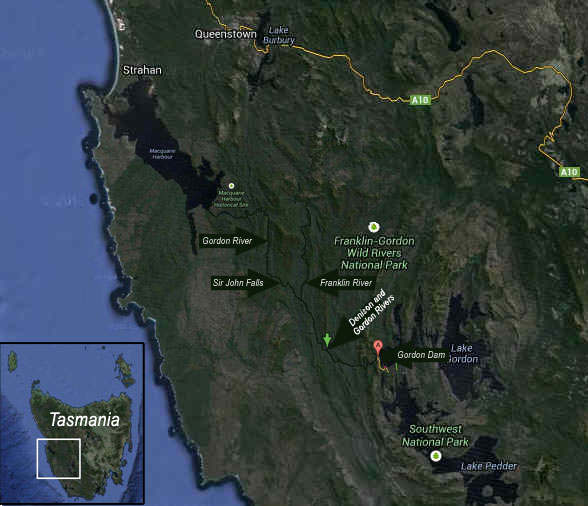
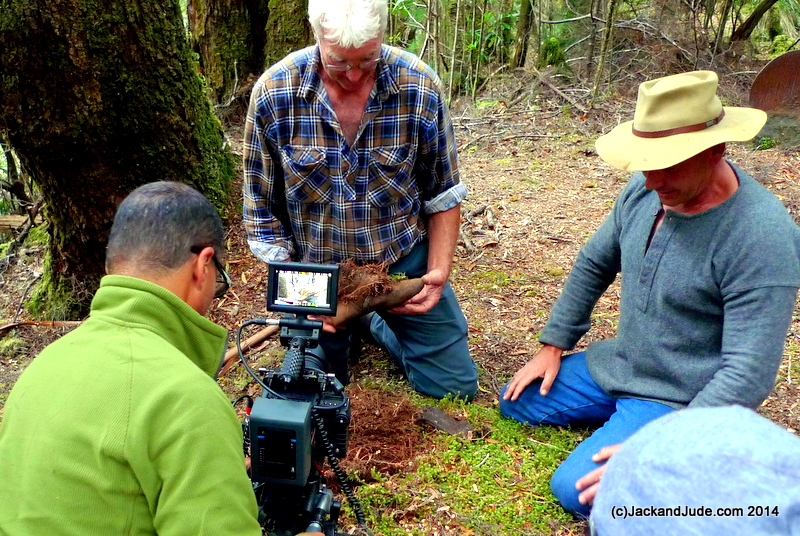


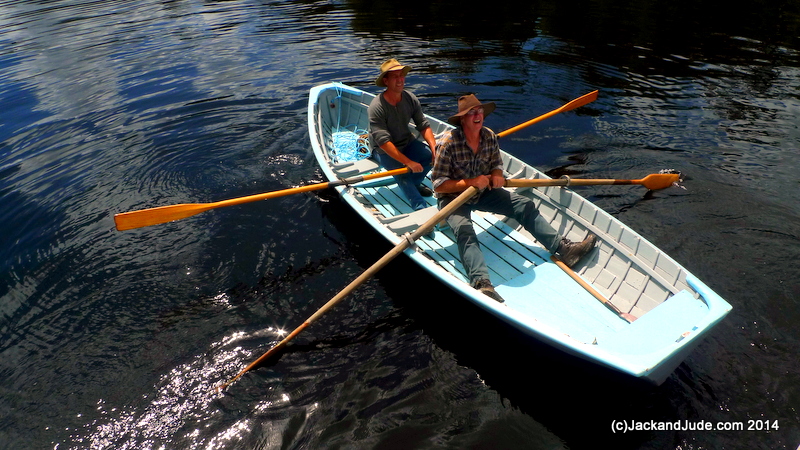
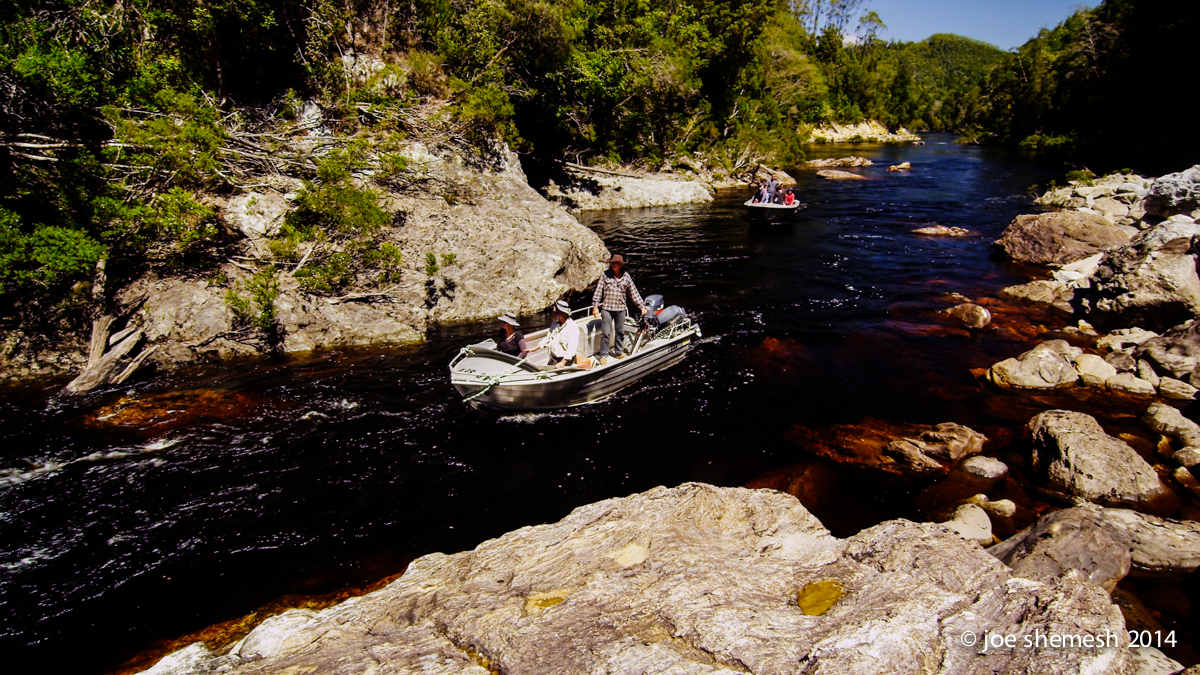
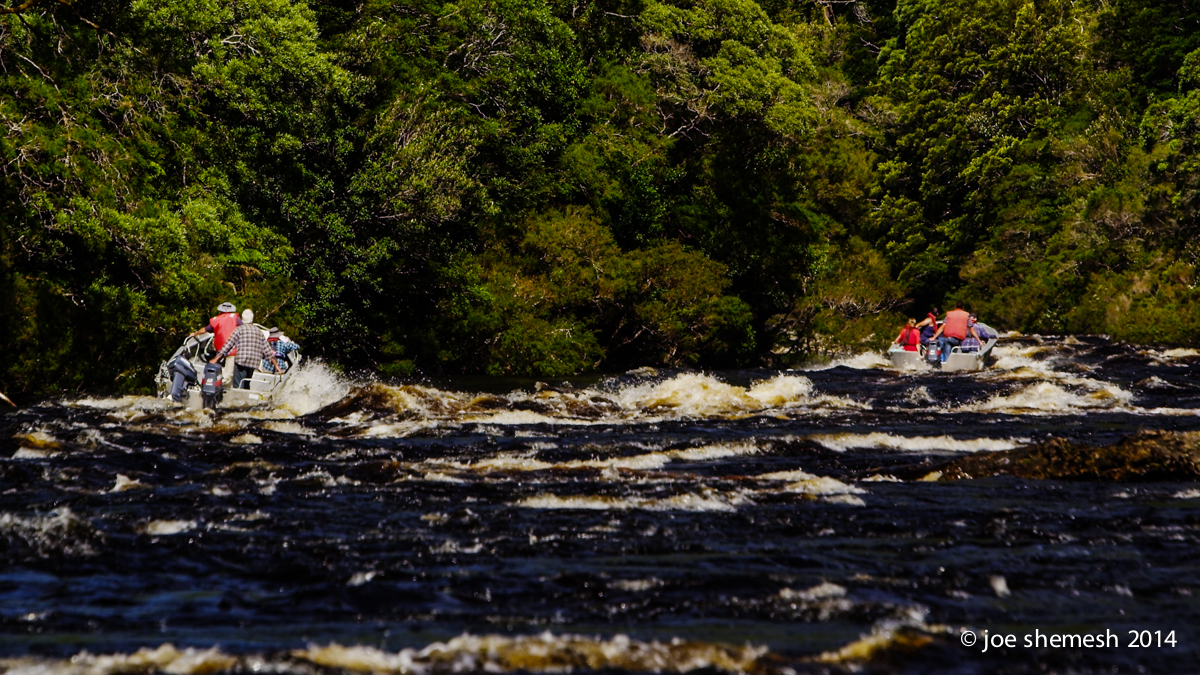
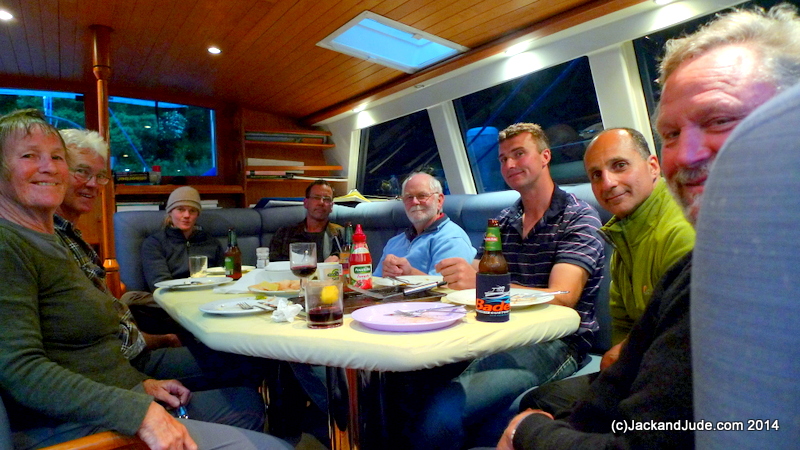
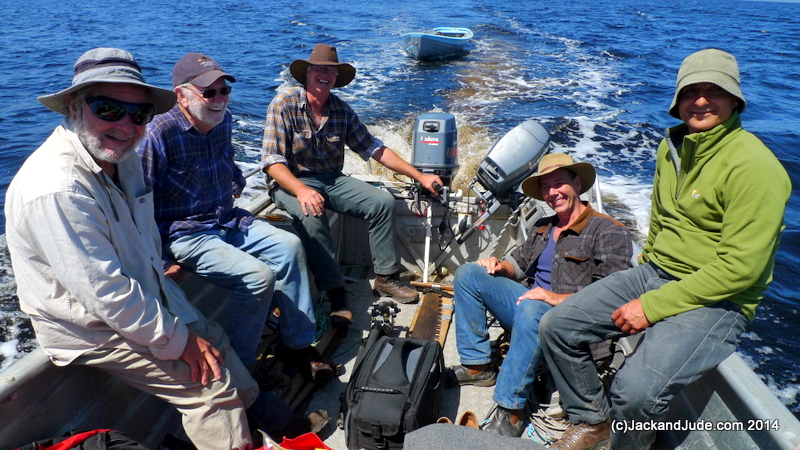
Believe you had a very special trip up the Gordon, I have been talking to Ron M. Waiting to see the DVD. Kind regards, Crosses.
Gooday Jack,
Really enjoyed your account of the trip. Glad to hear Jude’s leg is doing so well.
catch you later
John
Looking forward to hearing all about it in person. The pictures are wonderful. A journey to remember.